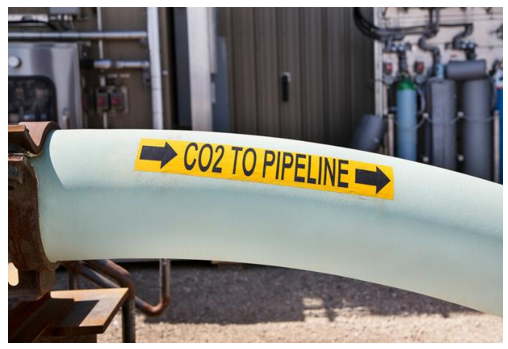Kawasaki Breaks Ground on World’s First Centrifugal Hydrogen Compressor for Liquefaction Plants
Kawasaki Heavy Industries, Ltd. has begun construction of a groundbreaking demonstration facility for the KM

SMR is the largest way of producing hydrogen and it is a cost-effective method among the present-day commercialized processes. However, there are concerns among the general public, policymakers, environmentalists and technologists regarding SMR due to its drawbacks especially one major drawback which contributes to global warming. The most significant drawback of steam methane reforming (SMR) is that it produces significant amounts of carbon dioxide (CO2) as a byproduct. SMR is a process that converts methane, a hydrocarbon, into hydrogen and carbon monoxide using steam as a reactant and then the water-shifting reaction is employed to convert steam and carbon monoxide into more hydrogen and carbon dioxide. This process is widely used to produce hydrogen for industrial and commercial applications and is well established as economically feasible, but it generates significant amounts of CO2 as a byproduct. In 2020 alone SMR and other traditional ways of hydrogen production together emitted 900 million tonnes of carbon dioxide into the atmosphere and this value is equal to the collective emissions of a few industrial nations. The CO2 emissions from SMR contribute to climate change and can have negative environmental and health impacts. Therefore, many researchers and policymakers are looking for ways to reduce or eliminate CO2 emissions from SMR and other hydrogen production processes. SMR with CCS and Biomethane reforming are two such solutions to heavy impact on climate.
Steam methane reforming (SMR) with carbon capture is a process that uses steam to convert methane, a hydrocarbon, into hydrogen, carbon monoxide and carbon dioxide. The carbon monoxide can then be converted into other useful chemicals, such as methanol or syngas. The carbon dioxide (CO2) produced during this process is captured and stored, rather than released into the atmosphere. This allows the hydrogen to be produced without generating CO2 emissions, making it a cleaner and more sustainable source of energy. SMR with carbon capture is still a relatively new technology, and it faces challenges such as the high cost of carbon capture and storage. However, it has the potential to reduce CO2 emissions from hydrogen production and support the transition to a low-carbon economy.

Biomethane reforming is a process that uses biogas, a mixture of methane and carbon dioxide (CO2), as a feedstock to produce hydrogen. Biogas is produced through the anaerobic digestion of organic waste, such as food waste or agricultural waste. In biomethane reforming, the biogas is reformed using steam and a catalyst, such as nickel or platinum, to produce hydrogen and CO2. The CO2 can then be separated and stored, while the hydrogen is used for a range of applications, such as power generation or transportation. Biomethane reforming offers a clean and sustainable way of producing hydrogen, as it uses renewable organic waste as a feedstock and reduces CO2 emissions. However, the process is still relatively new and faces challenges such as high costs and low hydrogen yields.
Although Biomethane and CO2 capturing options are progressing as solutions to drawbacks of SMR, these alternatives are facing heavy criticism. Especially Carbon capture and storage (CCS) during SMR is still a relatively new technology and faces techno-economic challenges. More research and development are needed to determine if CCS is a viable solution for reducing CO2 emissions from SMR and other hydrogen production processes.